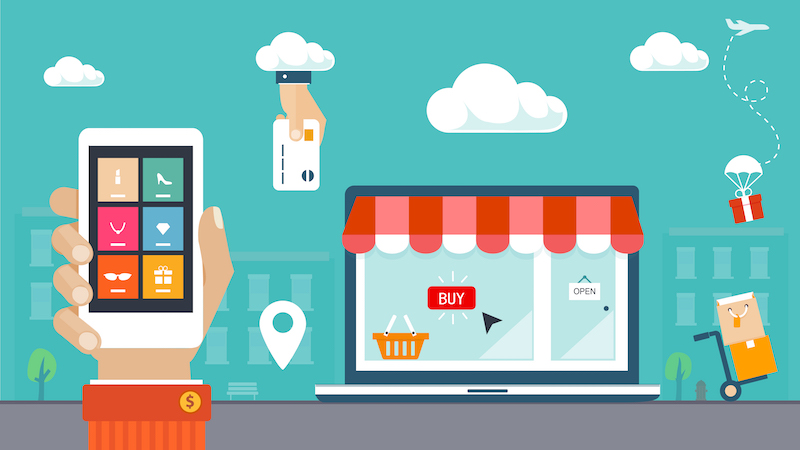E-commerce retailers often fall into the trap of pouring all their online marketing efforts into acquiring new customers, with many neglecting the importance of the post-purchase experience.
While getting a new user to hit the BUY button is important, it’s really only the first step in the customer journey. Retaining a customer is what’s valuable in the long run.
Retailers that capitalise on the opportunities behind the post-purchase experience will no doubt see an uplift in customer trust, loyalty and retention.
Here are five post-purchase best practices all e-commerce retailers should adopt to engage existing customers and keep them coming back.
1. Deliver On Your Promises
Customers often decide who to buy from based on a company’s delivery time and shipping methods. As a result, delivery is both a purchasing factor and post-purchase process. Ensure you offer the best delivery service you can afford, and that you fulfil delivery time expectations as promised. Failure to deliver on your promises can result in a loss of trust.
Customers also like to be kept in the loop on the progress of their online order as a sign of reassurance. Send relevant updates such as purchase and dispatch confirmation, expected arrival time and a final confirmation when delivery has been made. If any unforeseen delays arise, make sure you have a process in place to deal with the issue promptly.
2. Provide Reassurance in Transactional Emails
The order confirmation email is often the first customer touch point after an online transaction and the most important. Unlike instore purchases, customers don’t receive a physical item immediately after shopping online. So, provide as much reassurance as possible by including all the essential details in the email, including item(s) bought, total cost, delivery address, shipping method and estimated time of arrival. You could even include a countdown timer and map tracker to provide real time information on where their product is. If a discount was applied, remind customers on how much they’ve saved. The goal is to reinforce to customers that they have made a good decision and leave them confident in buying from you again.
3. Personalise the Conversation & Cross Sell
Customers tend to engage with transactional emails at a higher rate than promotional campaigns. The order confirmation email intends to provide customers a summary of their purchase. However, it’s also an opportunity for retailers to communicate relevant marketing messages and cross-sell. Personalise the experience by showcasing product recommendations based on a customer’s previous purchases or their browsing history.
Alternatively, offer a discount for their next purchase and highlight the possible savings. If customers are likely to re-order a product at some point, email them a reminder after the standard purchase cycle or based on the customer’s previous order frequency.
4. Make Customer Returns & Exchanges Quick & Easy
A seamless online shopping experience is imperative for customer satisfaction, but it’s equally vital that the returns and exchanges process is quick and simple. Always include a comprehensive, step-by-step guide on how to exchange or return items and outline clearly any terms and conditions. Ensure this information is readily accessible on your website and in the order confirmation email. Attach a physical copy of the information in the package and include a return form to make the task hassle-free. Double up the packaging so that it can be easily opened, but can also be used to easily return the product. THE ICONIC does this really well – they even pay for the return delivery too!
5. Encourage User Feedback & Social Sharing
Continue the conversation with your customers after a purchase to maintain engagement, cultivate meaningful relationships and foster loyalty. Encourage customers to follow your social media portals, join a rewards program and sign up to your newsletter. Connecting with buyers on these channels can help you lay the groundwork for repurchases. Send customers an email a week after they’ve received the product and incentivise them to leave a review. Reviews and ratings provide social proof which can be beneficial for future conversions. They are also a great way for brands to get genuine feedback and showcase quality customer service.
Additional Tips
- Make sure you have the best fulfillment process possible. The last thing you want is for a customer to order a product and get notified two days later that it’s out of stock.
- Surprise and delight your customers, whether it’s a thank you note, a gift or a discount voucher for first-time buyers. For example, Adore Beauty sends a Tim Tam, along with product samples/sachets with every customer purchase. It’s the little things that keep buyers coming back.
- Ensure your company’s branding is present and consistent, whether it’s in your email communications, physical packaging or mail bag.
- Personalise the shopping experience and customise marketing messages where possible. Customers don’t want to be treated like a number. Show that you know them and that you care.
The post-purchase process is an integral part of the customer journey and enhancing this experience is important for brands who want to maintain an edge from competitors in the crowded e-commerce market.
Latest posts by Matt Ware (see all)
- 5 Post-purchase Best Practices All E-commerce Retailers Should Adopt - October 12, 2016








